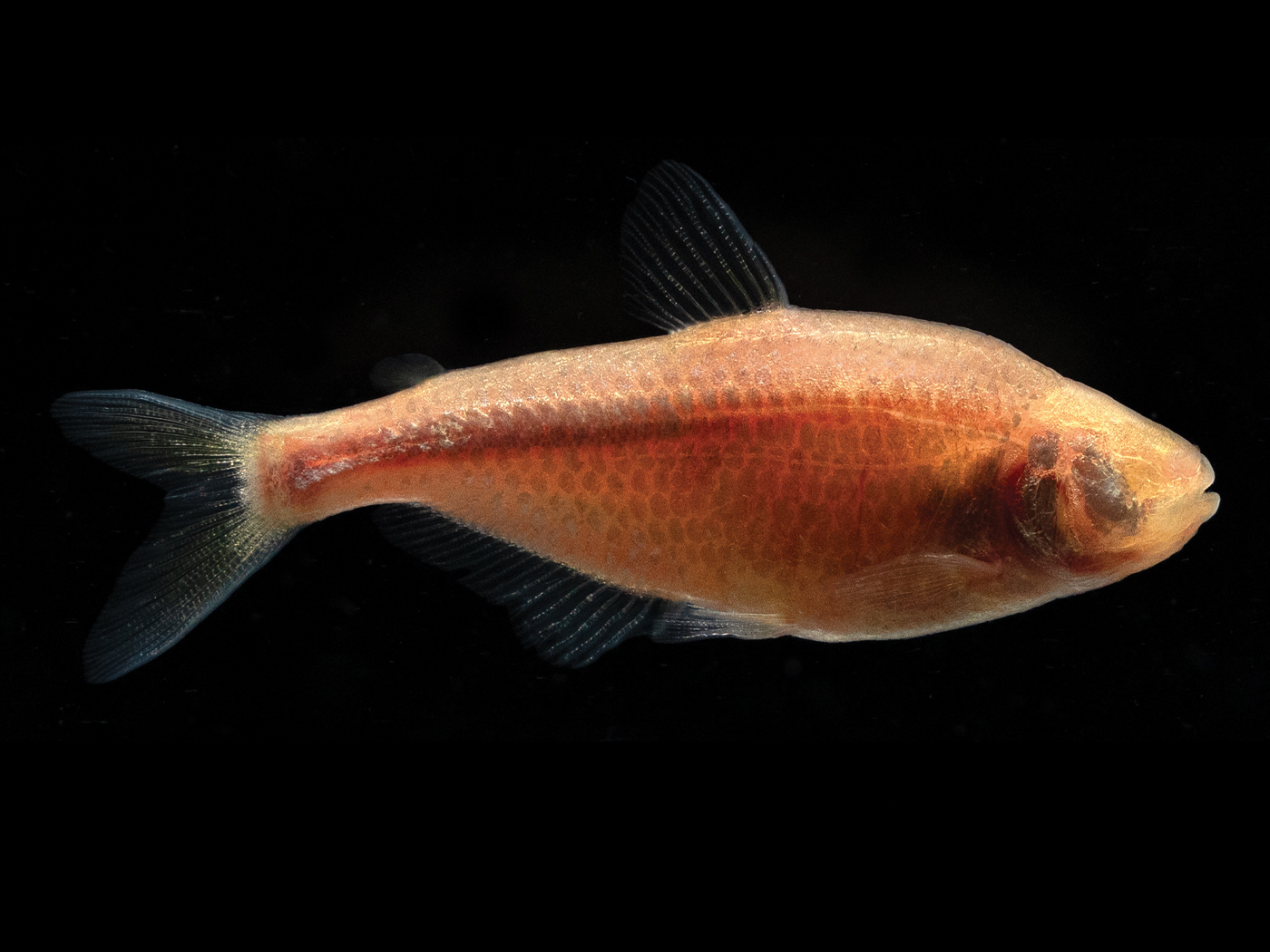by Brian Thomas, M.S. and Frank Sherwin, M.A.*
Charles Darwin drew his first "evolutionary tree" in his "B" notebook in 1837, with the words "I think" scrawled above it, to illustrate his idea that all of today's species arose from a single common ancestor. This concept lies at the heart of evolutionary thinking, and the tree-like images that often accompany its instruction have been effective indoctrination tools.
However, if today's creatures evolved from some other creature millions or billions of years ago, then the Bible's history must be abandoned. This is because Scripture does not leave any room for eons of time. Where and why would one add "millions of years" to an account that consists of tight chronologies that lead back to a creation week in which "in six days the LORD made heaven and earth" (Exodus 20:11)?1 Second, Scripture consistently refers to living creatures as belonging to basic "kinds" or forms (Genesis 1:21, 24-25), not as having descended from totally different kinds. Either evolutionary history is correct, or biblical history is. There is no middle ground.
Of late, evolutionary family trees have been unraveling, and this comes as no surprise if macroevolutionary theory is largely false. Most attempts to build these evolutionary, or phylogenetic, trees have been so fraught with inconsistencies that some researchers are abandoning the whole paradigm, as reflected in a recent article in New Scientist magazine titled "Why Darwin Was Wrong About the Tree of Life."2 Thus, if Darwin was right, then both the Bible and science are wrong.
Molecular vs. Morphological Trees
Traditional phylogenetic trees connect living species with possible ancestors based on morphology--the forms or shapes that characterize them. But since each scientific investigator always had his or her unique opinion regarding what evolved into what (and when), evolutionary scientists needed a more objective basis to undergird Darwinian evolution. Thus, in recent decades, they have been optimistic that species-specific molecular sequences, continuously emerging from biochemistry labs, could bail out evolutionary phylogenies. They felt that by digitally comparing the protein or DNA sequences, authoritative phylogenetic trees could be constructed that would finally show the evolutionary links between all forms of life.
Using molecular instead of morphological data was expected to provide more accurate evolutionary trees than the mostly shattered and incomplete fossils that have historically added more confusion than clarity. However, these hopes have been dashed because "battles between molecules and morphology are being fought across the entire tree of life."3 Scientists increasingly recognize that different gene and/or protein sequences only add up to the same evolutionary trees when they are coerced and manipulated. Even so, the new trees based on these sequences consistently contradict the traditional, "old school" evolutionary trees.
Contradictory Evolutionary Stories
Study after study is finding even more problems with evolutionary lineages from the molecular data than existed with the morphological data. In fact, the two approaches consistently provide irreconcilably different evolutionary histories. One study that looked at certain DNA segments found that the gene sequence data was 99 percent off from the Darwinian model.4 New Scientist admitted that the tree of life "lies in tatters, torn to pieces by an onslaught of negative evidence…. [D]ifferent genes told contradictory evolutionary stories."2
As morphologists with high hopes of molecular systematics [explaining biological diversity in an evolutionary context], we end this survey with our hopes dampened. Congruence between molecular phylogenies is as elusive as it is in morphology and as it is between molecules and morphology....Partly because of morphology's long history, congruence between morphological phylogenies is the exception rather than the rule. With molecular phylogenies, all generated within the last couple of decades, the situation is little better.5
Indeed, the situation is worse. British evolutionist Michael Benton, when comparing certain fossils with live specimens, commented, "Lungfishes show significantly higher rates of evolution of the 28S rRNA gene sequences than coelacanths, other fishes and tetrapods, and this makes it hard to discriminate their correct position in the tree."6 Addressing evolutionary relationships from vertebrates' supposed distant past, Benton states, "There is, however, a major discrepancy between this result and current molecular phylogenies."7
Evolutionary biologists Andrea Feller and S. Blair Hedges compared the DNA sequences of four mitochondrial genes, and found a sister-group relationship of salamanders and caecilians, with frogs as the outgroup.8 This contradicts the pairing of frogs and salamanders, based on their similarly amphibian life cycles.9 Olivier Rieppel has found very little morphological support for the molecular pairing of turtles and archosaurs.10 The same contradiction popped up when investigating cartilaginous fish: "Molecular analyses of chondrichthyan phylogeny so far do not support the morphological tree."11
Examples of this widespread disharmony continuously emerge. Recently, Tamí Mott and David Vieites examined two mitochondrial genes and three nuclear genes in Brazilian worm lizards. After comparing these, they recommend that "we revise the taxonomy of this group," tossing out the old morphology-based phylogeny in favor of their new molecular-based ideas.12 Nor is this issue restricted to the animal kingdom: "Only rarely have phylogenetic studies of morphology and DNA data agreed in plant studies, even in well-studied groups."13
No Objective Evolutionary Relationships
This almost universal phenomenon--that experts can find no objective basis to link one kind of creature to another--is not yet widely acknowledged in the scientific community. General biology texts still often depict phylogenies with smooth progressions of creatures evolving into "higher" forms, but these largely ignore the rampant disagreement found at every level in the technical literature. Perhaps this is because many scientists are unwilling to face the broad implication of all these studies: If agreement on what evolved into what cannot even be reached within closely "related" creatures, then what confidence is there that objective evolutionary lineages will ever be found between totally different creatures? And if there are no such lineages, then there never was any Darwinian evolution. And without evolution, there must be a Creator.
The fact that it has been impossible to objectively establish evolutionary relationships between so many creatures indicates that creatures never evolved from different kinds. Darwin's tree, and the generations of more and more intricate versions of phylogenetic trees published over the last couple of centuries, are merely man-made illustrations of a long macroevolutionary past that never really happened. Instead, the progenitors of today's living creatures were created as distinct kinds around 6,000 years ago, even as God has revealed in His Word.
References
- Johnson, J. J. S. 2008. How Young Is the Earth? Applying Simple Math to Data in Genesis. Acts & Facts. 37 (10): 4.
- Lawton, G. 2009. Why Darwin Was Wrong About the Tree of Life. New Scientist. 2692: 34-39.
- Gura, T. 2000. Bones, molecules…or both? Nature. 406 (6793): 230-233.
- Ciccarelli, F. D. et al. 2006. Toward Automatic Reconstruction of a Highly Resolved Tree of Life. Science. 311 (5765): 1283-1287. This study “found” the mismatch not as a published result, but indirectly. In order to perform their evolutionarily-skewed analysis, the researchers had to exclude the vast majority (estimated to be far more than 99%) of genetic data, which implies at least a 99% mismatch of extant genes with their evolutionary origins.
- Patterson, C., D. M. Williams, and C. J. Humphries. 1993. Congruence Between Molecular and Morphological Phylogenies. Annual Review of Ecology and Systematics. 24: 153-188.
- Benton, M. J. 2005. Vertebrate Paleontology. Malden, MA: Blackwell Publishing, 69.
- Ibid, 41.
- Feller, A. E. and S. B. Hedges. 1998. Molecular evidence for the early history of living amphibians. Molecular Phylogenetics and Evolution. 9 (3): 509-516.
- Benton, Vertebrate Paleontology, 104.
- Ibid, 114.
- Ibid, 165.
- Mott, T. and D. R. Vieites. Molecular phylogenetics reveals extreme morphological homoplasy in Brazilian worm lizards challenging current taxonomy. Molecular Phylogenetics and Evolution. Article in press, available online February 2, 2009.
- Frohlich, M. W and M. W. Chase. 2007. After a dozen years of progress the origin of angiosperms is still a great mystery. Nature. 450 (7173): 1184-1190.
* Mr. Thomas is Science Writer and Mr. Sherwin is Senior Science Lecturer at the Institute for Creation Research.
Cite this article: Thomas, B. and F. Sherwin. 2009. Darwin's Withering Tree of Life. Acts & Facts. 38 (5): 16.











